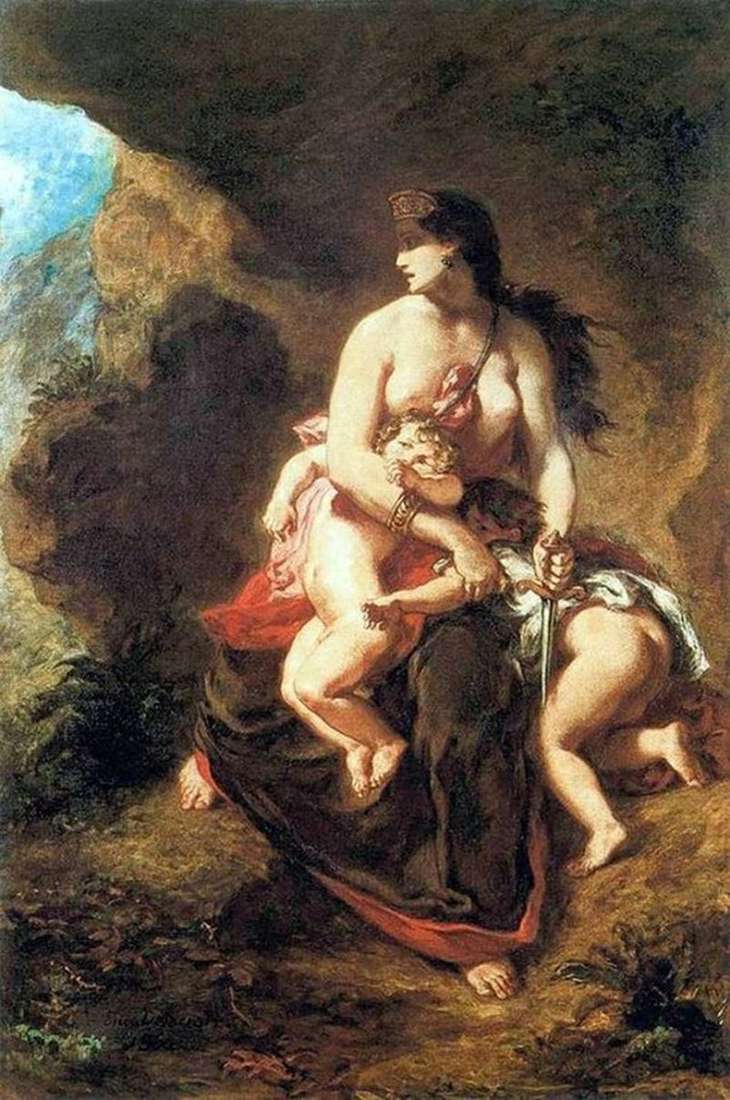
The plot is taken by the artist from the well-known tragedy of the ancient Greek writer Euripides Medea. “Medea’s image is known to us from ancient Greek myths and legends: the passionate and strong-willed queen Medea was the keeper of the Golden Fleece, a symbol of luxury and power. Jason, driven by a passionate desire to get the Golden Fleece, with the Argonauts on a long and difficult journey.
In the palace of the Tsarina Medea, he manages to successfully overcome all kinds of obstacles and witchcraft tricks, as a result of which he not only gets the Golden Fleece, but conquers the woman’s uncontrollable heart.
A woman in love surrenders to the mercy of the winner. And soon produces two beautiful children. For the sake of love for the hero, the queen refuses power, leaves her kingdom and fled with Jason, but here in exile she is faced with a cruel betrayal. Corinthian king Creon, who learned that Jason possesses a magical rune, offers to give him his daughter, the princess Hlavka, in secret, wanting to get a relic.
Jason, not reflecting on that, throws the beloved with the children, agrees. Enraged and distraught with pain Medea is plotting a terrible revenge. Left alone with the children, she transforms the monstrous plan into life and, with her own hands, kills the fruits of her insane love – two beautiful sons.
Delacroix, who belonged to the current that predominated in the 19th century – romanticism, took this tragic plot for his painting. The painting is written according to the canons of that time. On it we see a queen with two sons, her face is not either rage or fear. She looks around, as if she is looking for support, justification for what she is about to create.
With one hand she holds her sons. One of them hangs on her arm in an absurd, uncomfortable pose. The child is scared, trying to escape. She seized another boy by the hand and pressed her to him so that he would not run away, and he throws a look at the event, full of bewilderment. And he sees a knife tightly clasped in his mother’s hand.
Delacroix succeeded in these postures and gestures to convey the horror and inevitability of what is happening. He created a very bright emotional image of an abandoned woman who, in the name of revenge, is able to take even such a step as infanticide.
